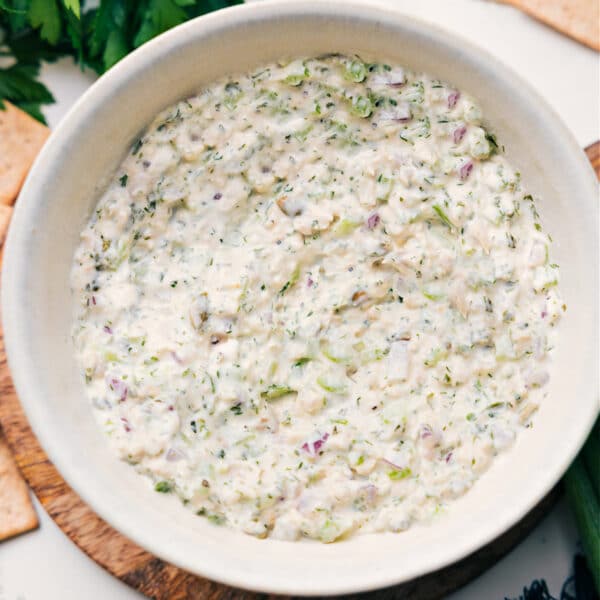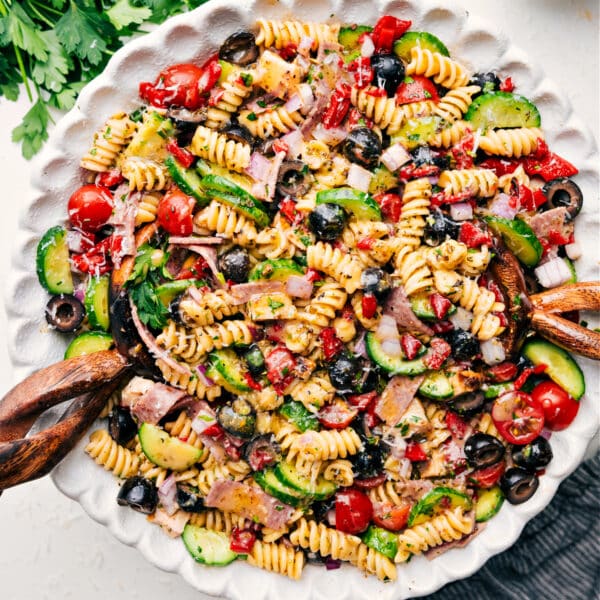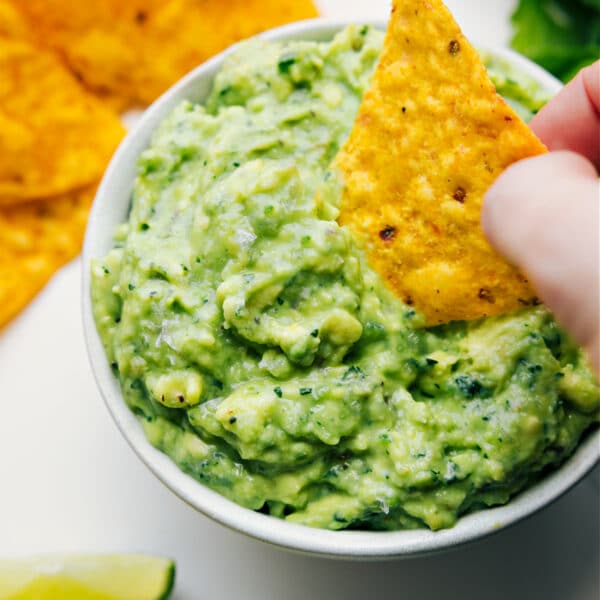Salsa Verde is my favorite green salsa—made with tomatillos for that signature color, tangy flavor, and a hint of smoke from broiling. Grab some chips—you’ll need them!
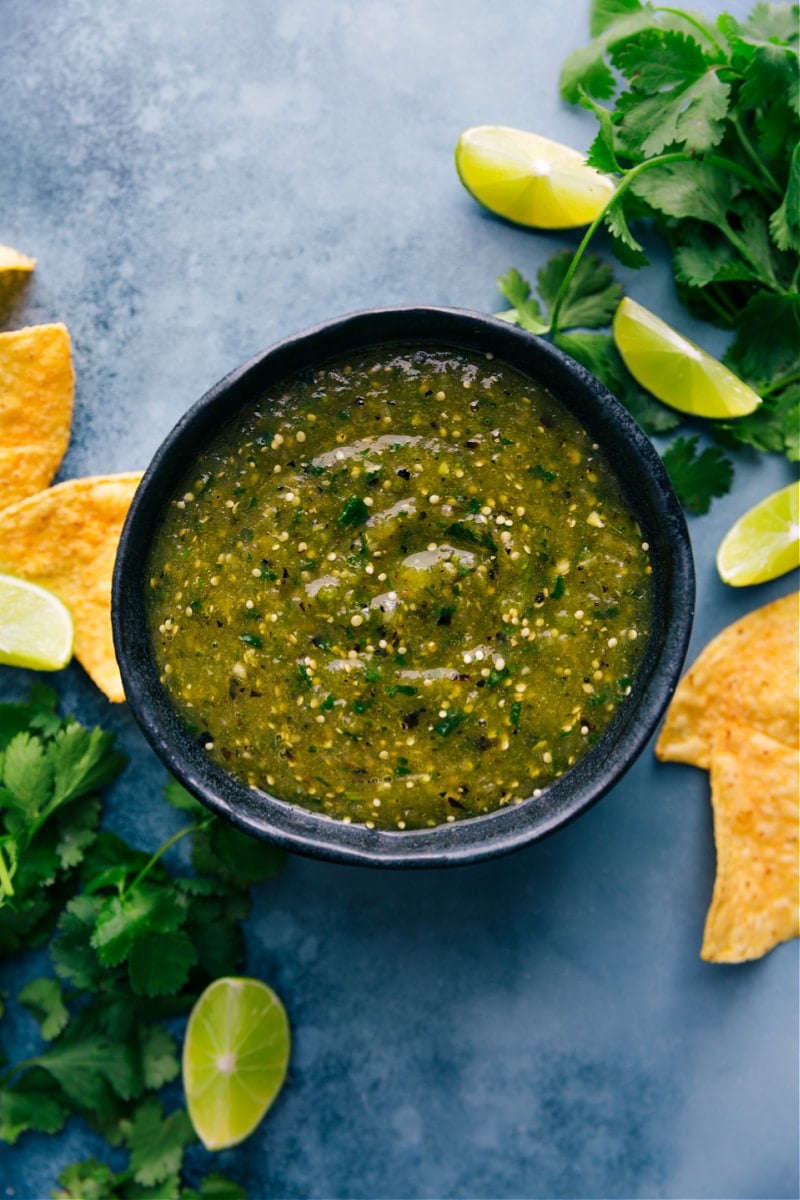
Homemade Salsa Verde Recipe
Dip lovers, celebrate!
You aren’t left wanting anymore with just our red salsa recipe, because we’ve finally perfected our idea of the best Salsa Verde!
We’ve gone through bags of chips, prepared our favorite Salsa Verde Chicken a few times, and used it in our easy slow cooker Salsa Verde Chicken Soup. Obsessed a little? Yes, and we aren’t ashamed of it!
What Is Salsa Verde?
If you aren’t familiar, salsa verde is a type of spicy green salsa in Mexican cuisine, highlighting tomatillos and green chili peppers. The tomatillo-based salsa dates back to the Aztec Empire (documented by Spanish physician Francisco Hernandez).
It’s a vibrant green sauce with a tangy and zesty flavor, a hit of spice, and welcome smokiness. Typically you’ll find this salsa served with chips, but it’s a great addition to so many dishes as a way to boost flavor and add texture.
Quick Tip
Never used tomatillos before? They look like green, unripe tomatoes, and come in a dry, leafy husk that wraps around the outside. They taste nothing like tomatoes, though. They’re tart and sweet, not as juicy, and provide a zesty flavor that tomatoes can never match. When you remove the husk you’ll notice a slightly sticky substance. Just rinse that off and proceed with the recipe!
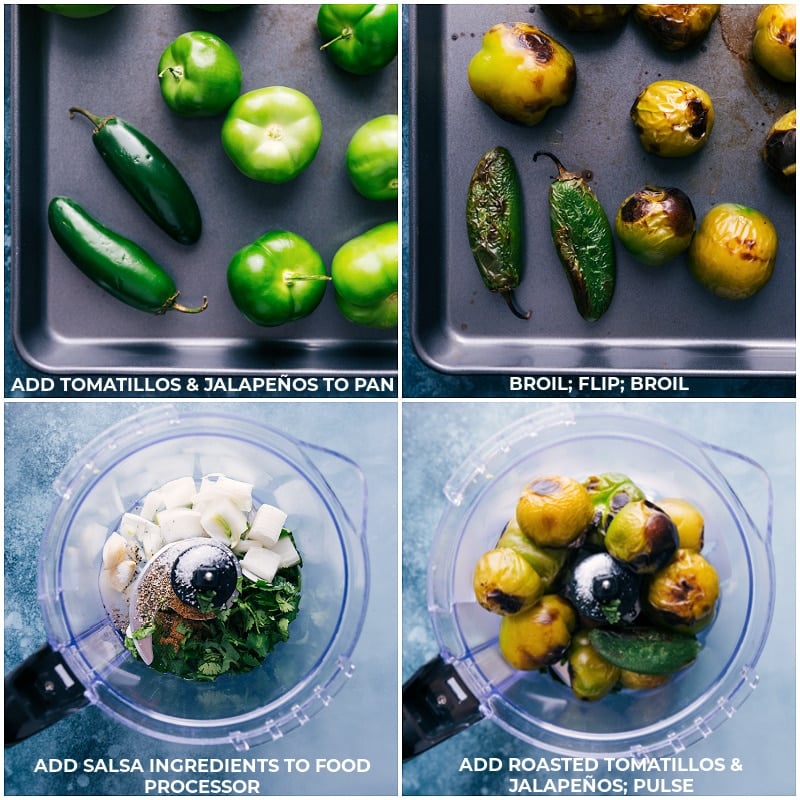
Why Make Your Own Salsa Verde?
If you’ve ever had homemade Salsa Verde, you likely need no convincing. If you haven’t though, I get it: what’s all the hype?
- You can customize it to your preference. This is the main reason we started making our own and haven’t ever gone back! Love spice? Great, it’s easy to bump up. Want it mild? Scale to your preference. It’s nice to be able to emphasize flavors you love more (like lime, cilantro, etc.) or minimize flavors you don’t care for as much.
- Economical. When you make your own, you can also make as much (or little) as you’d like to minimize food waste or spending at the grocery store. You pay a premium for someone else to make this sauce for you. The ingredients for this sauce are inexpensive and you can make it in bulk and freeze the leftovers. (Frozen leftovers are just as easy to use as opening up a can!)
- It’s easy. Truly, making your own salsa verde is quick and simple — you’ll be amazed how fast it comes together.
Salsa Verde FAQs
Verde’ means green, and the base is typically made with tomatillos. Salsa (red salsa) is made from tomatoes.
I’d rate this recipe as medium spicy, though it all depends on the jalapeños used—there can be a significant variation in heat from pepper to pepper.
Tomatillos are small, green fruits that look like green tomatoes, but they’re not related. With a dry husk and tart, slightly fruity taste, they’re perfect for our cilantro salsa verde. Though technically fruits, they have a savory flavor.
How To Make Salsa Verde
- Broil: Remember that promise of smoky flavor? We get that here! Broil the jalapeños and tomatillos until charred all over. This adds loads of flavor with so little effort.
- Blend: Once ingredients are nice and charred, transfer them to a blender with the rest of the ingredients. Pulse until you’ve got the perfect consistency.
- Taste and season: Don’t forget to give the Salsa Verde a quick taste and adjust seasonings until the flavors are just how you like them.
- Chill: The salsa will seem a bit thin at first — this is normal. Allow time for the sauce to thoroughly chill, it thickens quite a bit in the fridge. (The pectin in the tomatillos is responsible for the thickening.)
Recipe Tips
- Tomatillos: Try to use tomatillos roughly the same size. They should be firm to the touch, but not rock hard or squishy. Avoid tomatillos with loose husks that are shriveled or discolored. To prepare for this recipe: Pinch off the husks, scrub clean (they’re sticky) under warm water. Dry, and leave them whole to broil.
- Modify the heat: If you aren’t a fan of intense heat, be sure to remove the seeds and ribs from the jalapeños before tossing them into the food processor. You can even slightly reduce the amount, but keep in mind that tomatillos are fairly sweet. The jalapeños help balance the sweetness. On the flip side, if you love spice, leave in as many ribs and seeds as you can handle!
- No cilantro: If you don’t love cilantro, just leave it out. Try adding extra lime juice instead.
Storage
Can You Freeze Salsa Verde?
Store leftovers in an airtight container (we like to use Mason jars) and seal the top. Keep in the fridge for 4-7 days. (If a film begins to develop on the top or it smells off, you’ll know it’s not longer good to use.)
Freeze extra salsa by placing it in freezer-safe plastic bags. Thaw overnight in the fridge.
We haven’t personally tried canning this salsa, but check out this great resource by Heartbeet Kitchen for more information.
How Do You Eat Salsa Verde?
Beyond serving Salsa Verde with chips and calling it a day, this sauce enhances the flavor of so many dishes! It’s also a nice textural addition to so many recipes:
- Top. Add to your favorite tacos, burritos, tostadas, crunch-wraps, quesadillas, enchiladas (really any tortilla-based meals).
- Finishing Sauce. Drizzle over grilled chicken, fish, or steak (or black beans/refried beans if you’re vegetarian).
- Add to a bowl. Replace other sauces or guacamole with a scoop of salsa verde instead in your favorite taco bowl or chicken burrito bowl.
- Add to your favorite breakfast. Salsa verde is amazing drizzled over scrambled eggs, added to breakfast burritos, or used to amp up the flavor in a breakfast casserole!
- Replace salad dressing. If you have a hearty and loaded salad, this salsa can stand in for the dressing nicely.

Easy Salsa Verde
Equipment
- Food processor or blender
Ingredients
- 1-1/2 pounds tomatillos 9 to 12 tomatillos, see note 1
- 1 to 2 small jalapeños see note 2
- 1/2 cup coarsely chopped yellow onion or white onion
- 1/2 cup coarsely chopped cilantro
- Salt and pepper
- 1/2 teaspoon ground cumin
- 1 teaspoon granulated sugar optional
- 1 tablespoon chopped garlic about 2 to 3 cloves
- 1-1/2 teaspoons white wine vinegar
- 1 to 2 limes
Instructions
- Place oven rack about 4 inches below the heat source and preheat broil to high. Prep tomatillos (see note 1) and add them along with jalapeños (see note 2) to a sheet pan. Broil for 5 minutes or until blackened and beginning to blister. Remove sheet pan and use tongs to carefully flip the tomatillos and jalapeños. Broil another 3–5 minutes or until thoroughly blistered and nicely charred black.
- Meanwhile, in a large food processor or blender, add all the other ingredients, seasoning to taste with salt and pepper (I add 1-1/4 teaspoon salt and 1/2 teaspoon pepper). Add 2–4 tablespoons fresh lime juice (start with less and add more to taste). Pulse 15–20 seconds to break down.
- Add charred tomatillos and jalapeños to food processor/blender. Pulse until mixture is mostly smooth with no large chunks. Scrape the sides as needed. Taste and add any extra lime juice, salt, and/or pepper as needed until flavors are vibrant. It will seem a bit thin at first—this is normal. Allow time for the sauce to chill; it thickens in the fridge.
- Transfer salsa verde to an airtight container and refrigerate for at least 1 hour. Enjoy with chips or in your favorite dishes!
Video
Recipe Notes
Nutrition
Nutrition information is automatically calculated, so should only be used as an approximation.



